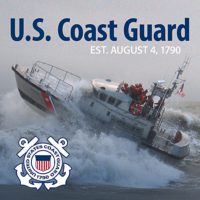
Lots of people want to know how the Boating Pecking Order applies to everyday boating. It is a great question. Lets explore it.
WHY IS THERE A PECKING ORDER
So the Boating Pecking Order exists to make our waterways safer and to avoid any confusion regarding who has the right of way. We are not going to cover the Navigation Rules of the Road here as we have another blog explaining that. Not only do we use Give Way and Stand On for basic right of ways we also must consider the type of vessel we encounter. Hence the Boating Pecking Order
WHEN DOES THE PECKING ORDER APPLY
We must understand that you always apply both the pecking order and the navigational rules of the road together in unison. This can sometimes be a bit confusing but we’ll try to work it out for you. Obviously we are more likely to encounter a wide variety of vessels on coastal waters. Not so likely on lakes. As a result we must fully understand how to apply the Pecking Order on ocean waters.
WHAT IS THE PECKING ORDER
First are Vessels Not Under Command (NUC): Vessels that are distressed or disabled. No one will run into them and must heed, or get around the NUC vessel. These vessels fly an Orange Flag
Second are Vessels with a Restricted Ability to Maneuver (RAM): Causes can be a mechanical issue or the nature of their work. They will fly the blue and white Code flag alpha on deck.
Third are Vessels that are Constrained by their Draft (CBD): Their draft constrains the vessels movement. For example if vessel has a 30 foot draft, it cannot operate in 25 feet of water. Generally speaking these are the larger ships, cargo ships, large military vessels etc…
Fourth are Commercial Fishing Vessels. A vessel used for commercial fishing may be towing hundreds of feet of netting or trawling. They may also be at maximum capacity. Stay clear.
Fifth are Sailboats under Sail. Self explanatory, yes I get you. However, did you know that when a sailboat displays a black conical shape with the apex pointing down a sailboat drops down a notch to a power boat in the pecking order.
Sixth are power boats or runabouts. The common powerboat that thousands of us own. Way down in the pecking order for a reason. They are small and quite nimble. In a way they are asked to be the most responsible. They can stop on a dime and maneuver in ways the others cannot.
Seventh and lastly comes Sea Plans and Paddlers. These vessels must get out of everyone’s way. A common misnomer with paddlers is that they feel they are similar to a pedestrian and have the right of way over everyone. Nothing can be further than truth. They must heed to all vessels.
IN CONCLUSION
Above all, if you are ever in doubt, take action to avoid a collision. Besides, we can always simply slow down. There is no room for egos when passengers lives are in your hands!
Here is a great page from the United States Coast Guard Navigation Center regarding the Pecking Order and who has the right of way: Amalgamated International & U.S. Inland Navigation Rules (uscg.gov)
Connecticut Boating Certificates Boat Licensing Course covers this topic with our students. Please visit our Public Course Schedule for available classes. Classes can be taken from anywhere in the world. Our license has reciprocal value throughout our nation and surrounding territories.






